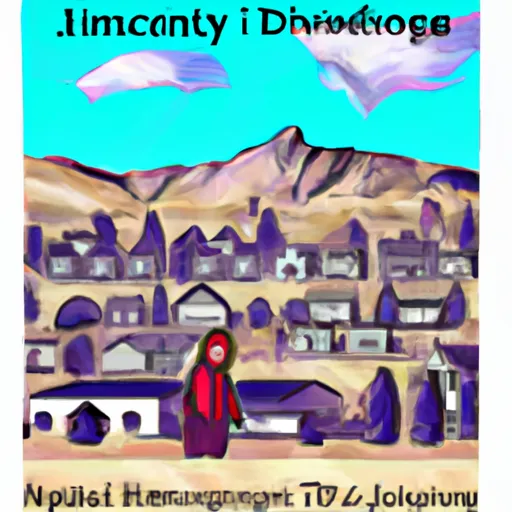-
 Snoflo Premium
Snoflo Premium
Get unlimited access to all our content
With no Ad interruptions! - Start Your Free Trial Login with existing account
Jamestown
Eden Index
Climate
7.6
•
Recreation
9.7
•
Community
4.2
•
Safeguard
7.5/10

Jamestown, Colorado is a picturesque mountain town located in Boulder County. Situated at an elevation of 6,900 feet, Jamestown offers a unique and pleasant climate. Summers are typically mild and comfortable with average temperatures ranging from the mid-60s to the mid-80s Fahrenheit. Winters can be cold with average temperatures in the 20s and occasional snowfall, creating a perfect environment for winter sports enthusiasts.
Hydrologically, Jamestown is surrounded by beautiful natural features. The town is nestled between the North and South St. Vrain Creeks, offering scenic views and opportunities for fishing and kayaking. These creeks also contribute to the overall charm of the area by providing a serene atmosphere and lush vegetation.
Jamestown is a haven for outdoor enthusiasts. The nearby Roosevelt National Forest offers plenty of hiking trails, mountain biking routes, and camping spots. Visitors can explore the stunning wildflower meadows, enjoy bird watching, or take in breathtaking views from the mountain peaks. Additionally, the area boasts excellent rock climbing opportunities for both beginners and advanced climbers.
In summary, Jamestown, Colorado, offers a delightful climate, stunning hydrological features, and a plethora of outdoor recreation activities, making it an ideal destination for nature lovers and adventure seekers.
What is the Eden Index?
The Snoflo Eden Index serves as a comprehensive rating system for regions, evaluating their desirability through a holistic assessment of climate health, outdoor recreation opportunities, and natural disaster risk, acknowledging the profound impact of these factors on livability and well-being.
Climate Health Indicator (CHI): 7.6
Jamestown receives approximately
535mm of rain per year,
with humidity levels near 50%
and air temperatures averaging around
7°C.
Jamestown has a plant hardyness factor of
5, meaning
plants and agriculture in this region thrive during a short period during spring and early summer. Most
plants will die off during the colder winter months.
By considering the ideal temperature range, reliable water supplies, clean air, and stable seasonal rain or snowpacks, the Climate Health Indicator (CHI) underscores the significance of a healthy climate as the foundation for quality living.
A healthy climate is paramount for ensuring a high quality of life and livability in a region, fostering both physical well-being and environmental harmony. This can be characterized by ideal temperatures, reliable access to water supplies, clean air, and consistent seasonal rain or snowpacks.
Weather Forecast
Streamflow Conditions
South Platte
Area Rivers
South Platte
Snowpack Depths
South Platte
Reservoir Storage Capacity
South Platte
Groundwater Levels
Recreational Opportunity Index (ROI): 9.7
The Recreational Opportunity Index (ROI) recognizes the value of outdoor recreational options, such as parks, hiking trails, camping sites, and fishing spots, while acknowledging that climate plays a pivotal role in ensuring the comfort and consistency of these experiences.
Access to outdoor recreational opportunities, encompassing activities such as parks, hiking, camping, and fishing, is crucial for overall well-being, and the climate plays a pivotal role in enabling and enhancing these experiences, ensuring that individuals can engage in nature-based activities comfortably and consistently.
Camping Areas
| Campground | Campsites | Reservations | Toilets | Showers | Elevation |
|---|---|---|---|---|---|
| Green Mountain | 6 | 7,615 ft | |||
| Meridian | 18 | 9,013 ft | |||
| Deer Creek | 13 | 9,092 ft | |||
| Echo Lake - Idaho Springs | 18 | 10,700 ft | |||
| Clear Creek RV Park | 36 | 5,684 ft | |||
| Ouzel | 13 | 6,285 ft | |||
| Kelsey | 17 | 8,035 ft | |||
| Lost Park | 12 | 9,958 ft | |||
| Platte River | 10 | 6,333 ft | |||
| Buffalo | 41 | 7,321 ft |
Nearby Ski Areas
Catastrophe Safeguard Index (CSI):
The Catastrophe Safeguard Index (CSI) recognizes that natural disaster risk, encompassing floods, fires, hurricanes, and tornadoes, can drastically affect safety and the overall appeal of an area.
The level of natural disaster risk in a region significantly affects safety and the overall livability, with climate change amplifying these risks by potentially increasing the frequency and intensity of events like floods, fires, hurricanes, and tornadoes, thereby posing substantial challenges to community resilience and well-being.
Community Resilience Indicator (CRI): 4.2
The Community Resilience Indicator (CRI) recognizes that education, healthcare, and socioeconomics are crucial to the well-being of a region. The CRI acknowledges the profound impact of these elements on residents' overall quality of life. By evaluating educational resources, healthcare accessibility, and economic inclusivity, the index captures the essential aspects that contribute to a thriving community, fostering resident satisfaction, equity, and social cohesion.

